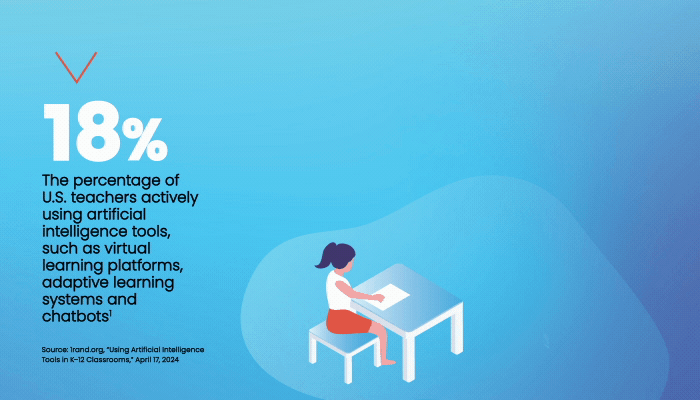Also in 2022, GCPS opened Seckinger High School, which incorporates AI throughout the curriculum and offers an AI career and technical education pathway for students who want to learn more. Three elementary schools and a middle school that feed into Seckinger have also adopted AI learning and follow the district’s AI Learning Framework, which provides grade-level guidance on integrating AI into learning standards.
In total, the district has 142 schools serving more than 182,000 students, which leaves plenty of room to build on these early efforts. One promising outcome so far, Holloway says, is that Seckinger students are more engaged in their classwork because its real-world relevance is clear.
Watkins agrees. “This starts with our students and making sure they are prepared for postsecondary education and for the changes we already see happening in the workforce,” she says. “We’re leaning into those critical thinking and problem-solving skills, all of the things we want students to have when they leave us, and it’s exciting that AI can support that.”
Nancy Amato, a computer science professor at the University of Illinois Urbana-Champaign, is working on bridging the gap between high school and college with a pilot program that would bring AI-enhanced computer science instruction to secondary students across Illinois. It’s based on a large, entry-level class that her university offers to incoming first-year students, with lessons and exercises that adapt to keep pace with student progress.
“Even though we have these huge numbers of students, we can do this because we are engaging AI to personalize instruction,” Amato says. “Those are the kinds of things we need to develop and make available to our K–12 teachers too, because they have the same issues.”
DISCOVER: Bridge creativity and artificial intelligence in K–12 education.
K–12 Schools Look Beyond Technical Skills To Build Proficiency
At Wichita Public Schools (WPS) in Kansas, Digital Literacy Coordinator Dyane Smokorowski says CIO Robert Dickson recognized ChatGPT’s potential immediately. In 2022, he tasked Smokorowski with leading a team to study AI as an essential skill for students and a way to facilitate project-based learning and inclusive learning for various languages, reading levels and accessibility needs.
“This is what we’ve been trying to have happen in education for decades, and educational technologies have finally caught up, so it’s now an easier interface for us to do this work,” Smokorowski says.













